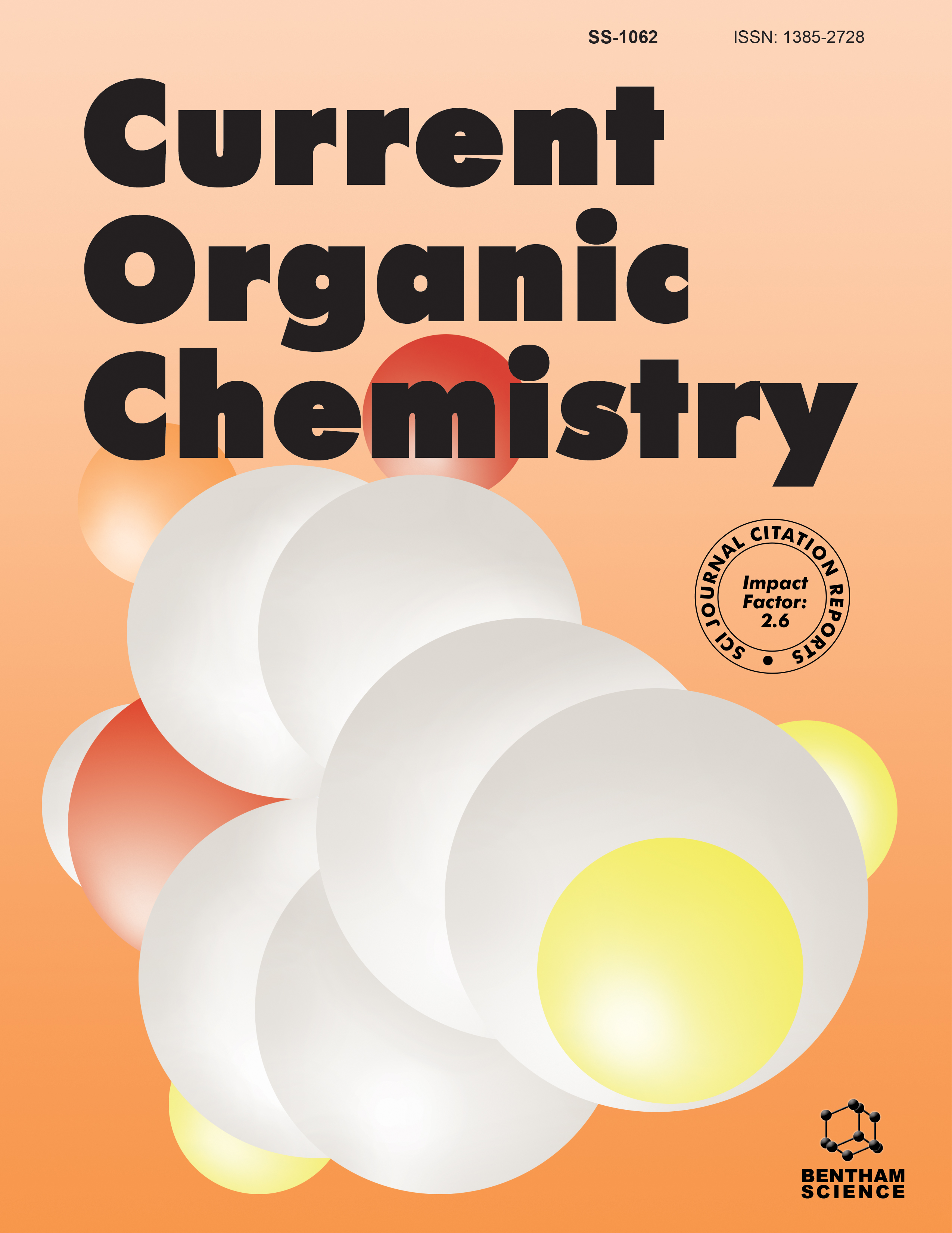- Home
- A-Z Publications
- Current Organic Chemistry
- Previous Issues
- Volume 19, Issue 17, 2015
Current Organic Chemistry - Volume 19, Issue 17, 2015
Volume 19, Issue 17, 2015
-
-
Immobilization of Proteins in Silica Gel: Biochemical and Biophysical Properties
More LessThe development of silica-based sol-gel techniques compatible with the retention of protein structure and function started more than 20 years ago, mainly for the design of biotechnological devices or biomedical applications. Silica gels are optically transparent, exhibit good mechanical stability, are manufactured with different geometries, and are easily separated from the reaction media. Biomolecules encapsulated in silica gel Read More
-
-
-
Immobilization of Proteins in Biopolymer-Silica Hybrid Materials: Functional Properties and Applications
More LessAuthors: Sarah Christoph, Francisco M. Fernandes and Thibaud CoradinBiohybrid materials combine the natural diversity of biomolecules with the flexibility of the inorganic sol-gel process. Association of biopolymers with silica is particularly useful for the preparation of threedimensional hosts for protein immobilization with tailored physical and chemical stability. They are easily tunable in terms of composition, structure and shape, including silicified hydrogels, core-shell particles, and thin films. Su Read More
-
-
-
Immobilization of Proteins in Ormosil Gels: Functional Properties and Applications
More LessAuthors: Luca Ronda, Stefano Bettati and Stefano BrunoOrganically modified silica (Ormosil) gels are three-dimensional matrices obtained by co-polymerizing tetraalkyl orthosilicates and organoalkoxysilanes through the sol-gel technology. Ormosil matrices are highly flexible with respect to macroscopic size and shape, as they can be prepared in the form of monoliths, layers, powders and nanoparticles, and to their physical-chemical properties, with special regard to h Read More
-
-
-
Proteins in Saccharides Matrices and the Trehalose Peculiarity: Biochemical and Biophysical Properties
More LessImmobilization of proteins and other biomolecules in saccharide matrices leads to a series of peculiar properties that are relevant from the point of view of both biochemistry and biophysics, and have important implications on related fields such as food industry, pharmaceutics, and medicine. In the last years, the properties of biomolecules embedded into glassy matrices and/or highly concentrated solutions of saccharides have b Read More
-
-
-
Immobilization of Proteins in Poly-Styrene-Divinylbenzene Matrices: Functional Properties and Applications
More LessSupports based on poly-styrene-divinylbenzene (PSD) are commercially available since a long time ago. However, they are not commonly used as enzyme immobilization matrices. The main reason for this lies in the negative effect of the very hydrophobic surface on enzyme stability that produces the instantaneous enzyme inactivation in many instances. However, they have recently regained some impact in enzyme imm Read More
-
-
-
Immobilization of Proteins on Highly Activated Glyoxyl Supports: Dramatic Increase of the Enzyme Stability via Multipoint Immobilization on Pre-existing Carriers
More LessThe binding of enzymes on carriers with a high degree of activation with glyoxyl groups is an excellent method for improving enzyme stability by multipoint covalent attachment on a pre-existing carrier. Glyoxyl groups are short aliphatic aldehyde groups (Support – O-CH2 – CHO) that can be obtained by periodate oxidation of glyceryl groups (Support –O-CH2-CHOH-CH2OH). The unique features of glyoxyl groups are as follows Read More
-
-
-
Immobilization of Proteins in Alginate: Functional Properties and Applications
More LessAuthors: Sandeep A. Chaudhari, Jayaranjan R. Kar and Rekha S. SinghalAlginate has revolutionized the way in which proteins and enzymes are used in daily life, right from food, textiles, medicines and surgical advancement to environment. Alginate is a biopolymer with unique physical and chemical properties that makes it functionally an ideal material for attachment with proteins. Immobilization of enzymes on alginate is well known to show altered catalytic functions and improved operati Read More
-
Volumes & issues
-
Volume 29 (2025)
-
Volume 28 (2024)
-
Volume 27 (2023)
-
Volume 26 (2022)
-
Volume 25 (2021)
-
Volume 24 (2020)
-
Volume 23 (2019)
-
Volume 22 (2018)
-
Volume 21 (2017)
-
Volume 20 (2016)
-
Volume 19 (2015)
-
Volume 18 (2014)
-
Volume 17 (2013)
-
Volume 16 (2012)
-
Volume 15 (2011)
-
Volume 14 (2010)
-
Volume 13 (2009)
-
Volume 12 (2008)
-
Volume 11 (2007)
-
Volume 10 (2006)
-
Volume 9 (2005)
-
Volume 8 (2004)
-
Volume 7 (2003)
-
Volume 6 (2002)
-
Volume 5 (2001)
-
Volume 4 (2000)
Most Read This Month
Article
content/journals/coc
Journal
10
5
false
en


